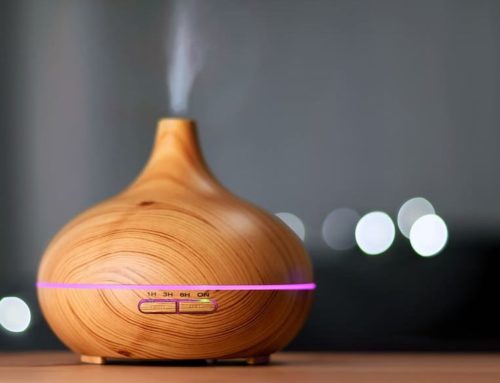Every home should fine-tune its furnace since it is the most efficient heating device for keeping you and your family warm. The optimal time to perform the required cleaning and maintenance is before temperatures begin to drop considerably so that they can function without issue.
Since winter is the coldest season of the year, it is essential to enter it prepared. Maintaining your furnace properly helps to extend its lifespan in addition to ensuring that it operates flawlessly.
Additionally, you may increase their energy efficiency, and somehow, all these advantages result in cost savings. By performing the following maintenance and cleaning procedures, get ready to benefit from your furnace’s peak performance:
Turn Off Power and Gas
You should spend some time performing a checkup on your natural gas heater once a year. You can stave off the cold, keep your heating costs down, and improve the energy efficiency of your house by doing routine maintenance and cleaning.
Additionally, you may save money by performing the annual furnace tune-up and maintenance yourself rather than making a possibly expensive call to a professional. Consult a qualified HVAC expert who can safely take care of your furnace for you if you’re unclear on how to properly cut off the power or gas to your furnace or are unsure of how to go about the maintenance.
Check The Flames On The Burner
Your furnace’s primary heat source is the burner flame, which ignites the gas as it passes through and forces heat upward into the heat exchanger. Check the colour of your burner flames to see if there is any dirt or leaks in your furnace.
Make sure to cut off the electricity before removing the combustion chamber door. Once inside, activate your thermostat, switch on the electricity, and verify the flame’s colour. The flame on your burner should be blue and burn uniformly.
Yellow flames are often an indication of filthy burners, but they might also indicate that carbon monoxide is being produced by your furnace. Call a specialist to take a look if carbon monoxide is causing you any concern.
Clear The Burner And Blower Cavities Using A Vacuum
Reset the power switch, then turn the gas valve 1/4 turn to turn off the gas. The burners and base of the furnace should be vacuumed. Tape a 20-inch. piece of 1/2-in. drainpipe to your vacuum hose so you can reach the rear of the burners.
Everywhere you notice dust, vacuum it up. Use a flashlight while everything is still open to search for soot (fine black powder), which frequently denotes inefficient combustion. Vacuum the blower compartment by raising the lower door (the blower door).
Replace The Filter
To maintain a smooth operation and good air quality, air filters capture dust, allergies, and other impurities before they enter your HVAC system. To maintain free and clean airflow, change your air filter regularly. The frequency of air filter replacement varies, but experts generally advise doing it at least every three months.
When acquiring replacement filters, be aware of the size you require. The dimensions of a filter are length, breadth, and depth. The nominal size should be rounded up to the next whole number from the size written on the existing filter or the filter slot measured using a measuring tape.
Another factor to take into account when buying filters is MERV ratings. The effectiveness of the air filter in trapping tiny particles is indicated by its MERV rating. The filter’s effectiveness increases with the rating. Selecting the highest rating without first ensuring compatibility with your HVAC system is a mistake. Filters with high efficiency might harm your system and limit airflow.
The furnace filter slot is located where the return air duct connects to the furnace. The return duct enters the side of the furnace at the bottom since most furnaces are upflowing systems. Behind a cover or door, the filter could be hidden. First, take out and throw away the old filter. Before replacing the furnace filter, pay attention to how it operates. The furnace should be the target of the filter’s arrows.
Furnace Duct Cleaning
When employing a forced-air furnace, furnace ducts are more vulnerable to damage. In this situation, routine duct cleaning with a powerful vacuum cleaner is necessary. Once you’re done, seal up all of the ducts to stop air from seeping into the furnace.
Clean The Vents
Gas furnaces have a venting system connected to them. Large volumes of dust and debris may eventually cause this ventilation to clog. Ventilation that is blocked poses a risk to users and can result in several risks. Clean all the vents using a sizable brush. Start by taking off the vent cover, then vacuum-clean the interior.
Combustion Chamber Cleaning
Here, the mixture of fuel and air sparks ignition and produces heat. The chamber is prone to carbon dioxide, water vapour, and soot accumulation. The burners’ ability to operate can be compromised when carbon accumulates.
Remove the access door to get access to the combustion chamber. To remove the carbon, scrape it off with a little wire brush. Loose material may be taken out with a shop vacuum. Next, look for corrosion and any holes in the chamber (which may be sealed with foil tape).
Check The Thermostat
Even with gas furnace systems that are well-maintained, thermostat issues can arise. We have seen that thermostats need to be replaced after closer to 10 years of use, even if your gas furnace will likely run for 15-20 years.
If the temperature in your house isn’t being maintained or reached a comfortable range, examine the wiring in your thermostat, clean out any dust or debris from the device, and replace the thermostat as needed.
If your home is heated by a gas furnace and you haven’t recently completed these tasks, your furnace probably needs some maintenance.
Plan yearly maintenance
To make sure that your heating system is operating properly and efficiently, routine furnace maintenance is necessary. It is advised to arrange an annual maintenance visit with a licensed HVAC professional who can check the electrical connections, examine and clean the furnace, and make sure everything is operating as it should.


![How To Change HVAC Filter? [Tips – 2022]](https://www.novaairac.com/wp-content/uploads/2021/04/How-To-Change-HVAC-Filter.-500x383.jpg)